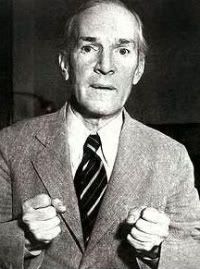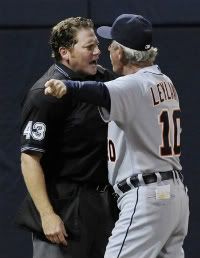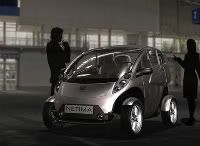To What Degree Do Vested Interests Determine Our Energy Future?

Craig, surely there’s no doubt that you are right to a great degree. There are vested interests that stand to lose a lot of money by a transition away from fossil fuels. As Upton Sinclair said some 70 or 80 years ago, “It is extraordinarily difficult to get a man to understand something when his salary depends on him not understanding it!” But are those established interests of the gods? No. I’m sure the makers of gas lamps tried to oppose Edison’s electric light.
Sir: This is all true. And no one needs to convince me that people of the time, e.g., the Rockefellers, were at least as powerful — and ruthless – as any forces around today. But did they have their tentacles so far into the fabric of Washington? And, perhaps more to the point, had the American people been lulled to sleep by a corporate-owned media empire that deliberately derails them from finding the truth?



 My post on
My post on 
 In the news on the electric vehicle front is Terry McAuliffe, prolific political campaign fund-raiser and close friend of Bill Clinton. On Tuesday, McAuliffe will announce to world leaders at the Clinton Global Initiative a commitment to invest $1 billion to build neighborhood electric vehicles in economically depressed areas of the United States to spur the economy and create green jobs.
In the news on the electric vehicle front is Terry McAuliffe, prolific political campaign fund-raiser and close friend of Bill Clinton. On Tuesday, McAuliffe will announce to world leaders at the Clinton Global Initiative a commitment to invest $1 billion to build neighborhood electric vehicles in economically depressed areas of the United States to spur the economy and create green jobs.
 Here’s a question for you now that mid-term elections are here. Do you have what it takes for a career as a political speechwriter? Here’s a one-question quiz that will help you find an answer. Suppose I were running for Congress. Which campaign platform would you recommend for me? You can tell voters that I will fight to:
Here’s a question for you now that mid-term elections are here. Do you have what it takes for a career as a political speechwriter? Here’s a one-question quiz that will help you find an answer. Suppose I were running for Congress. Which campaign platform would you recommend for me? You can tell voters that I will fight to:




 I like to think of myself as a man who doesn’t have to be right all the time. But once in a while, it really ain’t so bad. I have to think that this article on
I like to think of myself as a man who doesn’t have to be right all the time. But once in a while, it really ain’t so bad. I have to think that this article on 
 I deeply appreciate those of you who follow my observations of the renewable energy industry. Not everyone agrees with everything I write, but that’s quite OK with me, as disagreement is what helps us all get to the root of important matters — in this case, those that surround the technology, economics, and politics of clean energy.
I deeply appreciate those of you who follow my observations of the renewable energy industry. Not everyone agrees with everything I write, but that’s quite OK with me, as disagreement is what helps us all get to the root of important matters — in this case, those that surround the technology, economics, and politics of clean energy.
 I’m always interested in what the folks in electric vehicle auto design come up with. Common wisdom dictates an approach in which an EV driver makes a bold and clear statement of his choice — and his environmental consciousness — to the world around him. And, from a design perspective, this isn’t at all hard to accomplish (but of course, that’s easy for me to say). Simply building something a bit smaller and more aerodynamic than our standard coupes and sedans of the early 21st Century gets the job done nicely, while extending range and thus improving driver convenience. The recently unveiled four-passenger electric car (pictured here) designed by a team of entrepreneurs based near Paris, called NEOMA, is a terrific example — though some might find it a bit extreme.
I’m always interested in what the folks in electric vehicle auto design come up with. Common wisdom dictates an approach in which an EV driver makes a bold and clear statement of his choice — and his environmental consciousness — to the world around him. And, from a design perspective, this isn’t at all hard to accomplish (but of course, that’s easy for me to say). Simply building something a bit smaller and more aerodynamic than our standard coupes and sedans of the early 21st Century gets the job done nicely, while extending range and thus improving driver convenience. The recently unveiled four-passenger electric car (pictured here) designed by a team of entrepreneurs based near Paris, called NEOMA, is a terrific example — though some might find it a bit extreme.